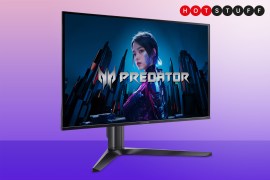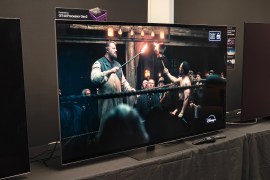Samsung S95B first impressions: QD-OLED TV tech is here
Shine bright like an OLED
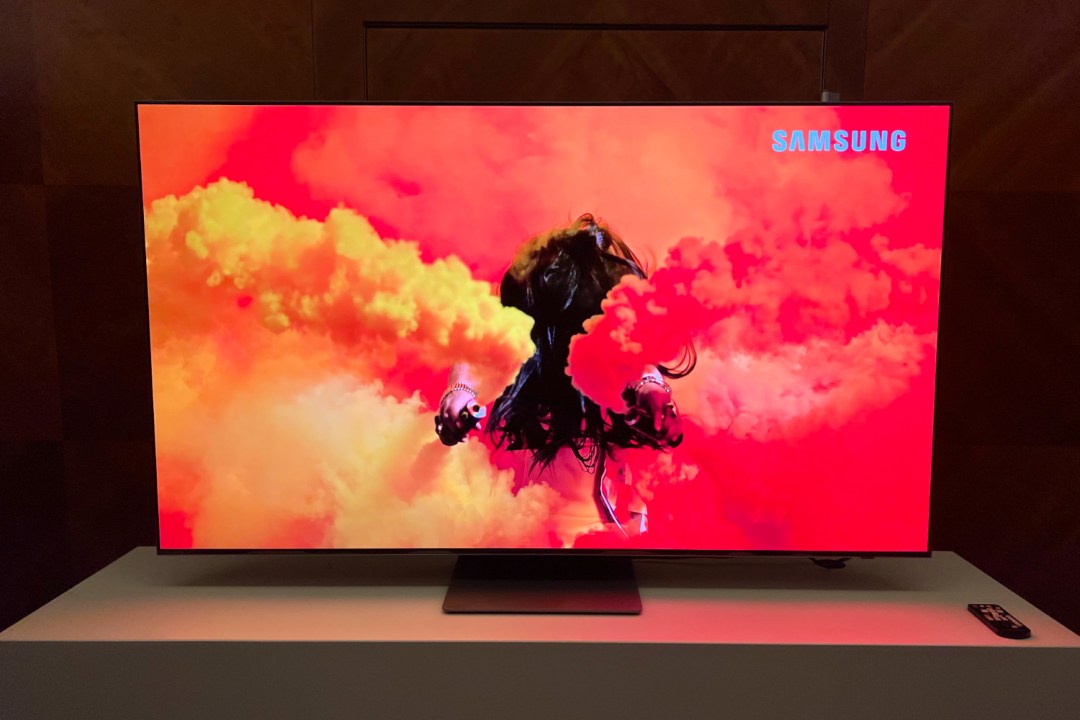
As the world’s number one TV manufacturer for 16 years on the trot, the popularity of Samsung tellies has never been in doubt. But there’s one area tech enthusiasts have been waiting for the firm to get behind (besides one brutally expensive attempt in 2013): OLEDs. For many cinephiles, Samsung’s lack of OLED offerings has made it a no-go for their home theatre setups.
Well, the tech giant has finally decided to do something about it. Enter the S95B. Samsung’s catchily-named new flagship uses Quantum Dot OLED (QD-OLED) panel tech, which promises both an extremely bright picture, and high colour accuracy.
We got to spend some time with the shiny new behemoth at Samsung’s UK Tech Summit showcase. Does the S95B deliver on Samsung’s promises? Pretty well, actually. Let’s take a look.
OLED, OLED, oh what can you do?
For those that don’t speak TV lingo, QD-OLED tech essentially combines the self-lighting of an OLED panel with the quantum dot film used in QLED sets. It’s supposed to deliver a brighter, more colour accurate display; and oh boy, does it do just that. The S95B is probably one of, if not the, brightest OLED models currently available.
While you can tweak the picture settings on rival sets to get similar performance, Samsung’s OLED is super bright straight out of the box. It’s so bright you may actually turn the brightness down for any night time Netflix binges – but that’s the sort of problem we’re happy to have.
As for colour accuracy and contrast, it’s definitely… different to other OLEDs. The S95B showed very vibrant colours, with high contrast and sharp details. But to our eyes everything looked a little warm, with particularly strong hues seeming on the edge of having too much punch.
While this is an effect of the quantum dot panel, the Neural Quantum Processor 4K is clearly doing a lot to amp up the picture. You know how colours are different on iPhones and Samsung Galaxy phones? It’s the same thing, down to the manufacturer’s colour preferences in the image processing. Unfortunately, it’s a matter of personal preference.
Another thing we can praise the S95B for is handling angles well. As you’ll find on most OLEDs, the image doesn’t really change with viewing angles, unlike traditional screens. Samsung’s offering seemed to handle off-centre viewing particularly well, keeping colour and contrast high on the agenda.
As is true of all Samsung TVs, the S95B doesn’t support Dolby Vision. The firm has thrown its hat in with HDR10+, which supports the same dynamic metadata and Rec. 2020 colour space as Dolby’s offering, but only supports a bit depth of 10-bit. Dolby manages 12bit – but then there aren’t any 12bit panels doing the rounds right now anyway. While home cinema fans continue to debate whether HDR10+ or Dolby Vision is better, HDR content on the S95B still has real impact.
Slim when you’re winning
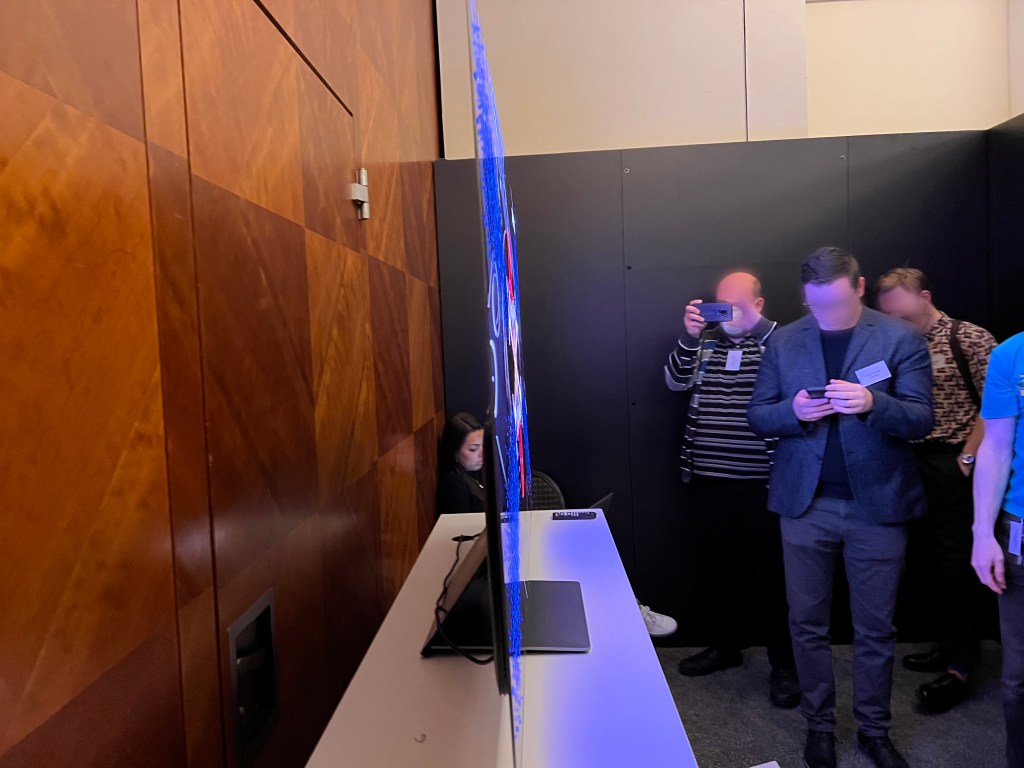
The S95B OLED comes in two sizes: 55in and 65in. That’s not the widest selection, and might rule out using one as a desktop computer monitor (too big) or for a dedicated home cinema setup (too small). It’ll will fit most living rooms comfortably, though, so it should be sufficient for most.
Samsung calls its new TV design language ‘LaserSlim’. While we’re not talking nanometre-levels of thickness, this is still an extremely skinny telly. Of course, all OLED models can promise similar measurements, thanks to the lack of a backlight. The only real visual difference is the stand, which has an impressively compact footprint. With no OneConnect box, connectivity is limited to four HDMI 2.1 ports, but all four support 4K at 120Hz.
The S95B has Dolby Atmos-certified speakers built into the TV frame. Samsung had the demo units on mute during our hands-on session, so we didn’t get a chance to hear them. As good as they might be, expect to need a soundbar or some other set of speakers, as we’d recommend for any TV – let alone one so thin.
On the software side, you’ll find Samsung’s updated Tizen OS with a new version of the Smart Hub interface. On the homepage, you’ll see recommendations and be able to jump into shows or recent content without opening up any apps. There’s also now an image calibration feature that works in tandem with your smartphone, to ensure you’re getting the best picture possible for your room’s lighting.
How does the S95B stack up to other OLEDs in 2022?
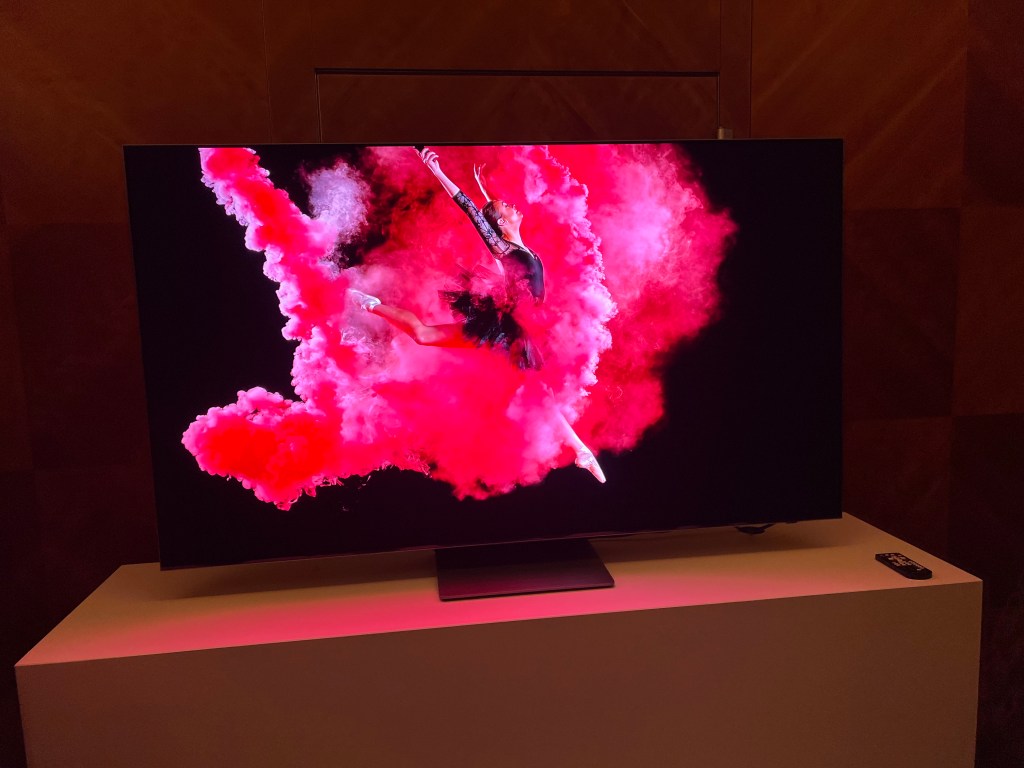
Based on our time with the S95B, Samsung is looking like a serious option for anyone looking for a new OLED TV this year. Which isn’t something we expected to be able to say in 2022. The bright screen is the highlight, but the vibrant colours and latest software also give it a real edge.
It’s not the only QD-OLED game in town, though. The Sony A95K is using the same (Samsung-produced) panel, but supports Dolby Vision and has very different picture processing. We’ll need to see them side-by-side before we can pick a winner. Those on a budget will likely find LG’s C2 range more to their liking, although the cheaper rival can’t match the Samsung on screen brightness. This year’s flagship LG G2 is a closer competitor – stand by for our full review on this, which is coming very soon.
Whichever OLED you choose this year, you’ll be in for a doozy of a screen. The 55-incher retails for £2399, while the larger option will set you back £3399; you can purchase both directly from Samsung or other tech stores. It’s probably worth taking an in-person trip to a retailer to check them out before clicking that buy button, though, what with personal preference being a huge factor.
